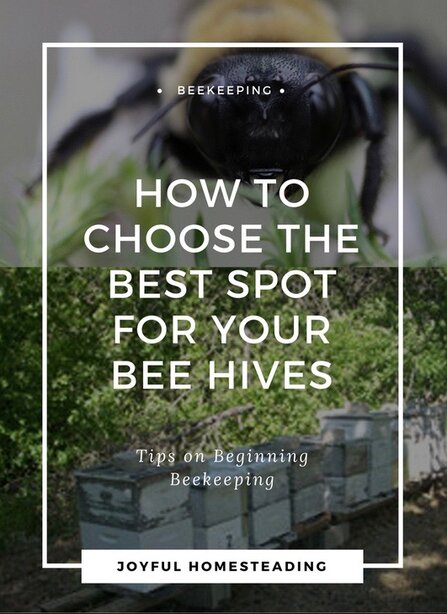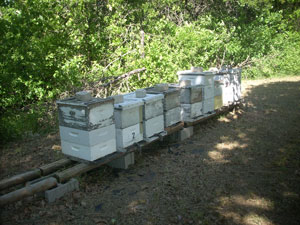Beekeeping Beginners:
Finding the Best Beehive Location For Your Colony of Bees
Beekeeping beginners will need to find the best possible beehive
location.
Life will be tough enough for your bees during the short time they are
alive and producing honey.

The worker bees – the wonderful ones who are collecting nectar and pollen and making honey –have to travel miles each day, literally working themselves to death.
Fortunately, you can make life easier for these hard-working girls – and help them produce more honey – by following these important tips.

Beekeeping Beginners
A Close Supply of Water
Water is crucial to the survival of your bees. Your bees use water to regulate the temperature of the hive by dropping water into the cells where it evaporates and cools the nest.
Bees prefer water that is sun-warmed rather than from a running source. They also like their water to be slightly saline rather than pure, so if you have a pond on your property, try to place the hive within 15 feet of it if you can. Otherwise, keep a container of water nearby.
Beekeeping Beginners
Where is Your Garden and/or Orchard?
The best beehive location is one where your best source of pollen and nectar is within two square miles of your hive.
Actually the closer the better.
Think of pollen and nectar as jet fuel for your bees.
A jet that only flies 50 miles will consume a lot less fuel than a jet that travels 500 miles.
The farther pollen and nectar are from your hive, the more your bees
will have to consume in flight before they get back to the hive.
The closer your hive is to a garden or orchard, the more honey you are
likely to collect.
Beekeeping Beginners
What Will Be the Traffic Pattern?
Like birds, bees do leave droppings, so if your neighbors driveway – and
their nice, new car – is in a direct path between your hive and the
nearest source of nectar, this may not be the best beehive location for
your colony.
Move it to another spot.
Beekeeping Beginners
How Close Are Your Neighbors
If things go well for your bees, for example, when the weather is warm and food is in abundance, then your bees will grow in numbers. When that happens, the queen will leave the hive, taking half of the workers with her.
The workers remaining in the hive will produce a new queen, and you will
now have two colonies of bees where you once had one.
This is an important thing to remember when considering the best beehive
location.
This is natural and a good thing, as it means more honey for you. But
it can also be a nightmare for your neighbors.
The new swarm will land anywhere and on anything that will hold their
weight, including your neighbor’s nice, new patio furniture.
It will be up to you to take the swarm away to their new hive.
This is something to think about when choosing the best beehive location
if you live too close to your neighbors.
Also Provide Both Shade and Sun
The best beehive location is one that has shade from the hot afternoon sun.
Ideally, you want a place that gets lots of early morning sun.
Point the hive so that the entrance faces the east. You want your bees will be early risers.
They live in the dark and won’t know the sun is up otherwise.
Light is what gets them up and moving, and you want them out and about
before the nectar has dried off most of the flowers – usually around ten
in the morning on hot days.
The earlier your little workers are up and moving, the more honey they
will produce.










New! Comments
Have your say about what you just read! Leave me a comment in the box below.